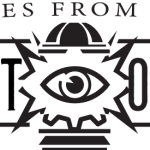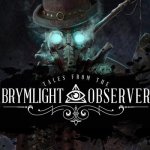
Another thing I had to work out with Paul (my editor) (no, saying “my editor” still hasn’t gotten old) was how to work together.
I do all my writing in Scrivener, a fantastic tool for creating, but when it comes to working with alpha readers or an editor, not so much. Remember here that my work with Paul and my publisher is still very much in the world of indie publishing with little or no budget!
After trial and error, it seems that I have found a consensus: Google Docs. Here’s the key features that I believe are making it so:
Ability to ask and answer questions: Is this the word you meant? This doesn’t make sense, what were you trying to say? etc. Docs lets you highlight a chunk of text as a question, have a 2-way conversation, and ultimately mark it as “resolved.”
Concurrently working on the same document at the same time: This is a little one, but extremely helpful – I don’t have to worry about stepping on an alpha reader or editor’s work when I am responding and updating. None of the save the file and let the other person know which version they should look at. Handily even marks changes made by the other collaborators. You can also open two copies of the same document if you need to look at something else without wanting to lose your place.
Chat: If you do happen to be working on the same document at the same time… you can online chat with your collaborators (in my case my editor) and sort things out on the fly. I didn’t realize you could even do this until Paul (my editor) (nope, still not getting old) hit me up one evening while we were both looking at the same doc.
Versions and showing changes: This one seems pretty obvious, the the cool part for me is never having to think about it – it just does. While not as powerful as revisions in Word, the ability to look at versions created over time is a great help in seeing what was changed. And not having to fuss around with other settings is a plus.
Where is the Save button??? I add this mainly because I have had to get used to the autosave. Even more dramatic, before I really knew about Google Docs, was not understanding why my daughter lost a term paper when borrowing my computer and using Word. “What? You didn’t hit the save button?” “Dad, what is a save button? (big mood)” Point taken.
Mechanically, it is a little bit of work to use Google docs effectively. Specifically, I export my writing from Scrivener in Word format to my Google Drive (which is shared with my editor)(…), open the document using Google Docs, re-save it in the new format. Then I blow away the original Word Doc. Going back the other way, I make a Scrivener snapshot of the scene and copy/paste the updated content back in. A little bit of work, but well worth it in my opinion!
Apologies for the long post. If you are still with me, my publisher (also not getting old) is planning a Kickstarter for the end of July to publish my short stories. For more information, and to sign up to be notified when it goes live, head over to: www.brymlight.com






